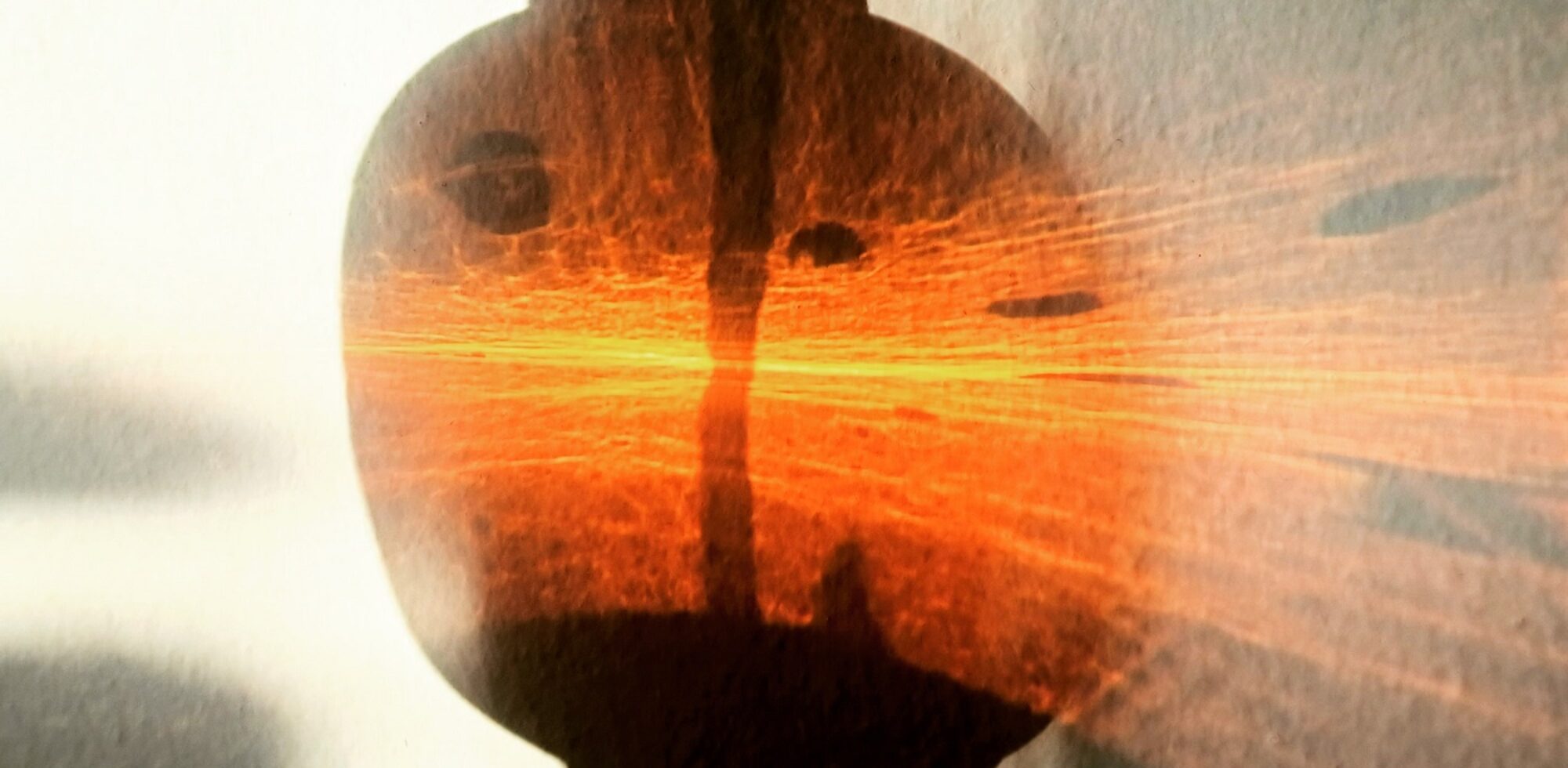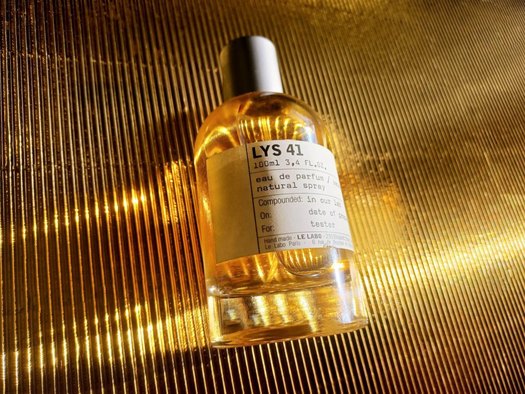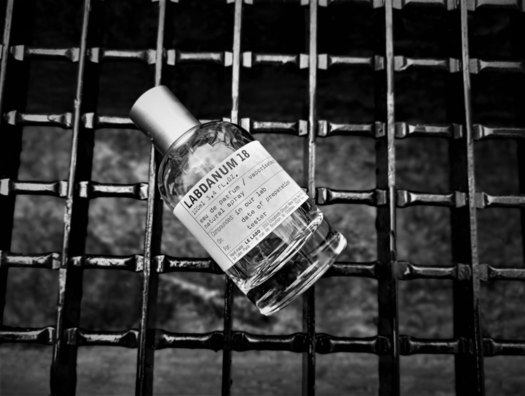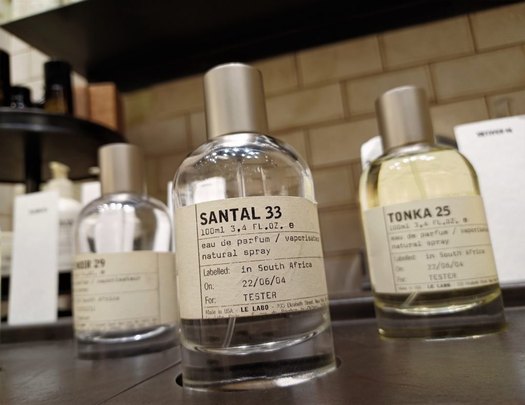The last time I chatted with Frank Voelkl, I instinctively knew he would enlighten me about the importance of synthetics in modern perfumery. So I turned once again to the New York-based perfumer to find out more about the intriguing (and often secretive) world of captive molecules.
Who created the decade-defining Le Labo Santal 33 EDP (2011) and helped kick-start the Ariana Grande fragrance empire with Ari EDP (2015)? That would be the German-born perfumer. He’s also the creator of the fragrances below, among others:
+ Dunhill X-Centric EDT (2001)
+ Kenneth Cole Reaction EDT (2004)
+ Sarah Jessica Parker Covet EDP (2007)
+ Oscar de la Renta Esprit d’Oscar EDP (2011)
+ Ermenegildo Zegna Florentine Iris EDP (2012)
+ Paris Hilton Dazzle EDP (2012)
+ Gucci Bamboo EDP (2015)
+ Dolce & Gabbana Velvet Amber Sun EDP (2017)
+ Glossier You EDP (2017, in collaboration with Dora Baghriche)
+ Hugo Boss Hugo Now EDT (2020)
+ Kilian Roses On Ice EDP (2020)
+ Boy Smells Marble Fruit Cologne de Parfum (2021, in collaboration with Hamid Kashani )
+ Aedes de Venustas 16a Orchard EDP (2021)
+ Abercrombie & Fitch Authentic Self Man EDT (2023)
+ Ellis Brooklyn Florist EDP (2023)
Before we get to the actual interview, some general background info on the workings of perfumery: The fragrance (and flavour) industry is dominated by several multinationals: Firmenich (Switzerland), Givaudan (Switzerland), International Flavors & Fragrances (America), Symrise (Germany), Takasago (Japan), Mane (France) and Robertet (France).
These corporates have a vast array of ingredients (naturals, synthetics and increasingly biotechnology) to be used by their perfumers.

IMAGE: Ariana Grande Fragrances.
What fragrances do you wear?
I like to wear different fragrances for different moments and occasions. For example, I wear Le Labo Santal 33 when I go out because it’s rich, warm, has a lot of signature and it’s my way of making a statement.
When I am on vacation, I wear Giorgio Armani Acqua di Giò Profumo. There is a nice balance of freshness and woody elegance, but it still feels casual.
When I travel and board a plane, I wear Hermès Terre d’Hermès as it has such a nice presence and I will smell myself more than anything or anybody else around me.
Where did perfumery start for you?
It really started for me when I was living in Paris as a teenager in the Eighties. I discovered my passion for fragrance and learned there are actually people who create them called perfumers. That sparked my desire to pursue this career.
When you studied at ISIPCA, were you aware of the existence of captive molecules?
I wasn’t aware of that back then, as my focus at the time centred on imprinting any molecules and natural ingredients into my olfactive memory. It was only once I entered a fragrance house (my first employer was Haarmann & Reimer) that I started understanding how powerful captive ingredients can be.
What was your fine fragrance debut?
My first real debut in fine fragrance was when I succeeded in creating Tiare de Chantecaille EDP in 1997, which was right around the time when the first niche brands started emerging.
I had the opportunity to meet Sylvie de Chantecaille who was getting ready to create her brand. She was looking for an exotic floral fragrance, got hooked on tiare and the fact that I had a personal connection to this iconic flower from Tahiti (my wife is from there and I go to the island almost every year since I met her 30 years ago), we decided to work on this fragrance together around it.
Without going into too much technical detail, how would you define captive molecules? And what are some of the most well-known examples?
A molecule is considered captive when a fragrance house such as Firmenich discovers a new fragrance ingredient that is only made available to their own perfumer team rather than being sold to a competitive fragrance house. That means it is exclusively used in fragrances from Firmenich, created by Firmenich perfumers.
In addition, when a team of scientists discovers a new molecule, it will protect it with a patent to avoid any other company copying or manufacturing that same ingredient. So it’s a powerful concept, as captive means exclusive.
Eventually, captives will be released, for example, when the patent has expired and so then they can be taken and recreated. We can decide as a company if we want to release some of our captives to others. Some great examples of captives that we have released in the past are [the lily-of-the-valley synthetic] Muguissimo (2022) and [the aquatic synthetic] Cascalone (2020).
Are they becoming more important in the creation process?
Captive molecules, as well as captive natural ingredients, have always played an important role in my creations, especially because Firmenich has quite a few captive ingredients available to their perfumers.
They have become more important in recent years as transparency is on the rise and consumers are more interested in the content and the origin of the ingredients used in their products.
Are captive molecules synthetic or natural ingredients?
Captives can be both. They can be molecules / synthetics, or they can be natural ingredients.
Firmenich has a molecule research centre in Geneva, Switzerland, and a Naturals Centre of Excellence in Grasse, France, which both work on finding the next new captives.
Are you incentivised to use Firmenich captive molecules in your creations?
Yes, and the biggest incentive is to have a fragrance creation that nobody outside of Firmenich would be able to recreate. We all know there are some market products out there inspired by previous existing creations, and so using captives allows perfumers to have unique formulas that are not easily copied.
“Using captives allows perfumers to have unique formulas that are not easily copied”
As perfumers, we naturally want to use them in our creations, as it gives us a competitive advantage and edge when we work on projects both for hedonics and for performance.
You’ve created several fragrances for Le Labo. For example: Iris 39, Santal 33, Ylang 49 and Thé Noir 29. And Ariana Grande Ari is one of your many other successes. Did you use any Firmenich captive molecules in their creation?
Sorry, I cannot really share all that information, but I can assure you that almost every single one of my creations will likely contain at least one or two captives from Firmenich in the formula.
That said, here are a few recent creations containing captives, but as they are captives I can’t name them all… Ariana Grande Mod Blush EDP (2022) contains Dreamwood. Calvin Klein Eternity for Men Parfum (2022) contains one of our most recent captives. Le Labo Thé Matcha 26 EDP (2021) contains four captives (two naturals, two synthetics).
I’m seeing the International Flavors & Fragrances (IFF) captive molecule Cashmeran everywhere. Does Firmenich have an equivalent captive molecule?
Cashmeran was indeed originally a captive from IFF, but it has been available for anyone to use for quite some time since 1983. It’s certainly unique in its character and is still trending. It’s not biodegradable, though, so we may see the end of it soon.
Firmenich has its own iconic molecules, such as Muscenone Delta or Helvetolide [both synthetic musks].
Could you tell me how you used a specific Firmenich captive molecule in one of your most recent creations? What did it bring to the composition?
Dreamwood is one of the latest Firmenich captive molecules stemming from our biotechnology research, a milestone in our ingredient advancements.
Natural sandalwood oil has become so rare that I got really excited to be able to use a natural sandalwood note like Dreamwood in a sustainable way. I have used it since the moment it was available to us in 2020. I love the incredible creaminess and comfort it adds to my creations. On top of that, it has benefits beyond its scent such as antimicrobial, antioxidant and soothing effects.
Le Labo Thé Matcha 26 EDP and Santal 33 EDP are available in South Africa from Skin Cosmetics.




































